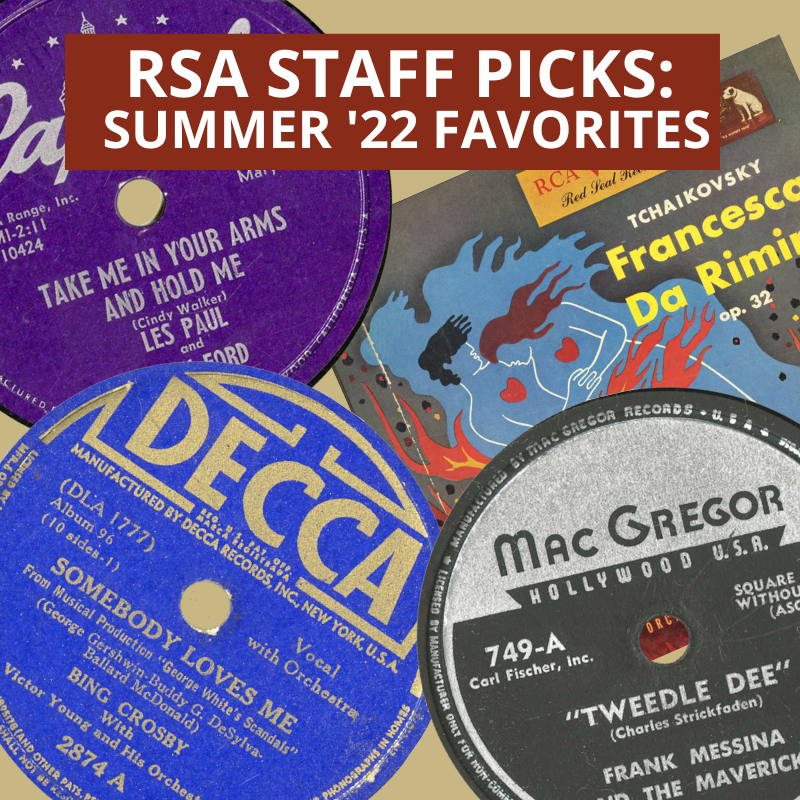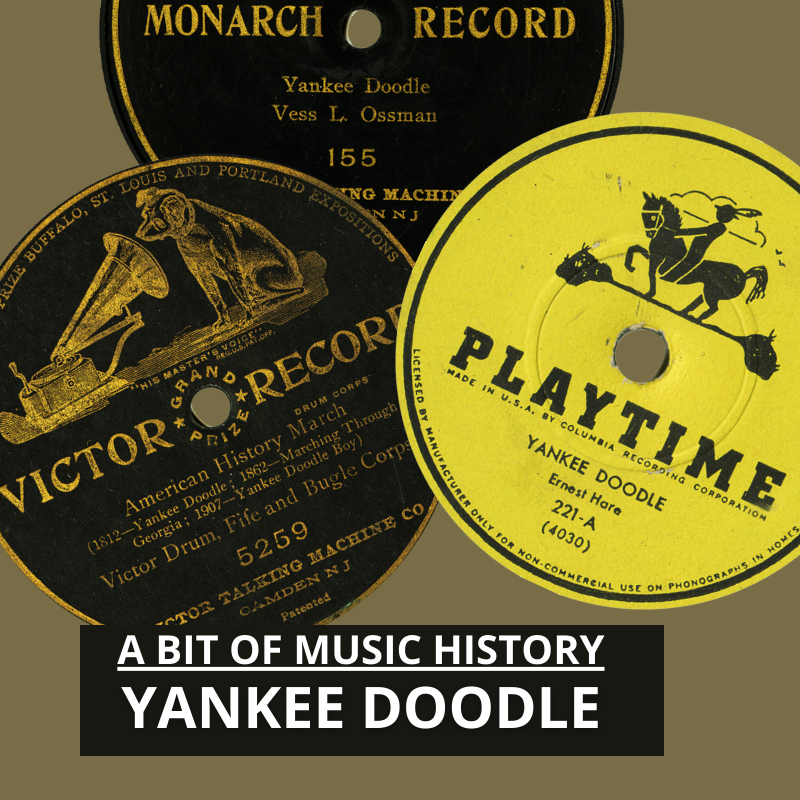RSA Staff Picks: Our Summer ’22 Favorites
Discover RSA staff picks, as summer comes to an end and the fall semester is in full swing this week at FAU Libraries, we thought we’d share RSA Staff Picks: Our Summer ’22 Favorites.

Staff Picks: Our Summer ’22 Favorites
- There’ll be some change made by Mildred Bailey
- If you were but a dream by Frank Sinatra
- Somebody loves me by Bing Crosby
- Marianne & Goodbye Chiquita by Terry Glikyson and the Easy Riders
- Tweedle Dee by Frank Messina and the Mavericks
- Isle of Capri by Irving Fazolas Dixielanders & other artists
- Ugly Woman by De Paurs Infantry Chorus
- The Yellow Roses of Texas by Johnny Desmond
- Clementine by John Scott Trotter and his Orchestra & other artists
- The Morningside of the Mountain by Hugo Winterhalther and his Orchestra
- Tchaikovsky: Francesca da Rimini, Op. 32 by Boston Symphony Orchestra
- Richard Strauss: Till Eulenspiegel’s Merry Pranks by Boston Symphony Orchestra
- Mozart: “Jupiter” Symphony No.41 in C, K. 551 by Arturo Toscanini and the NBC Symphony Orchestra
- Take Me In Your Arms and Hold Me by Les Paul & Mary Ford
- When Your Lips Met Mine by Horace Heidt and his Musical Knights
And let us know in the comments, what are some of your favorite songs you discovered this past summer?


